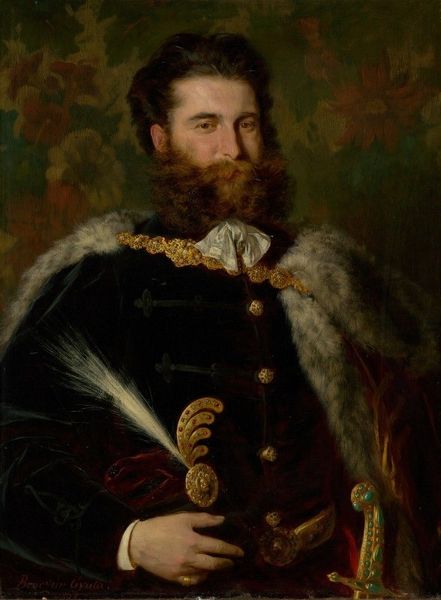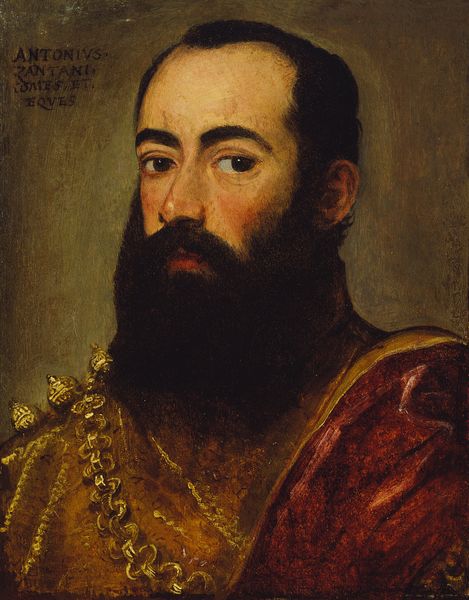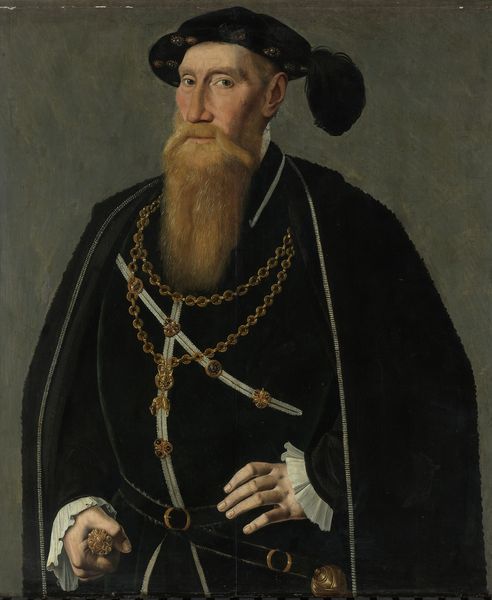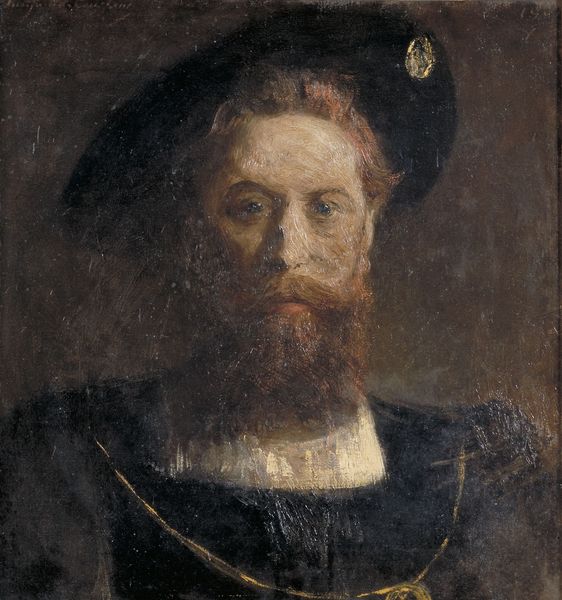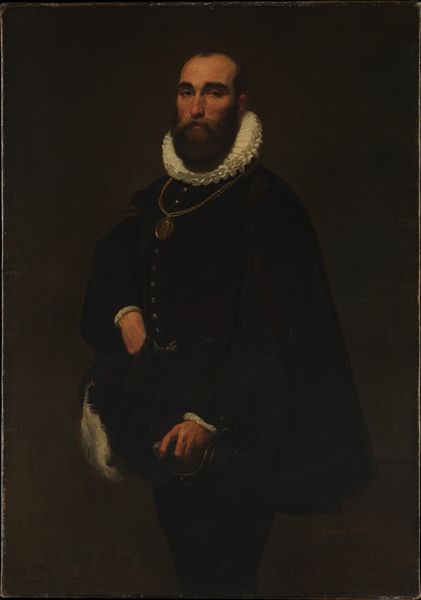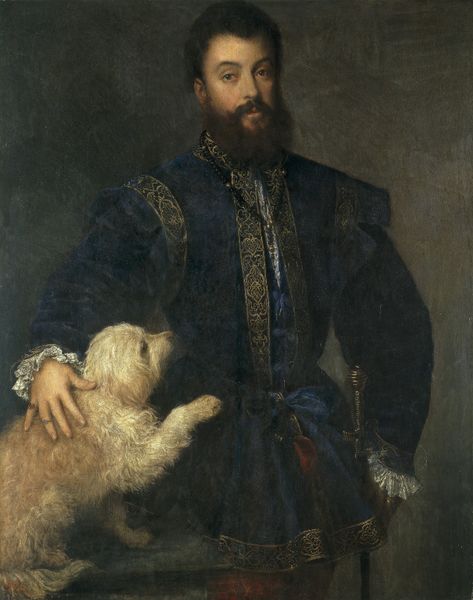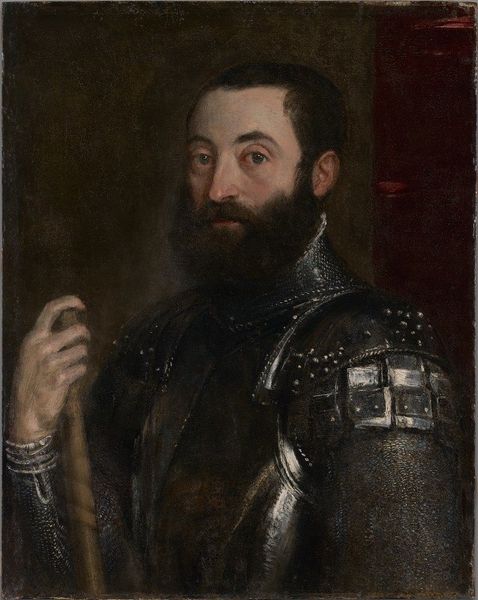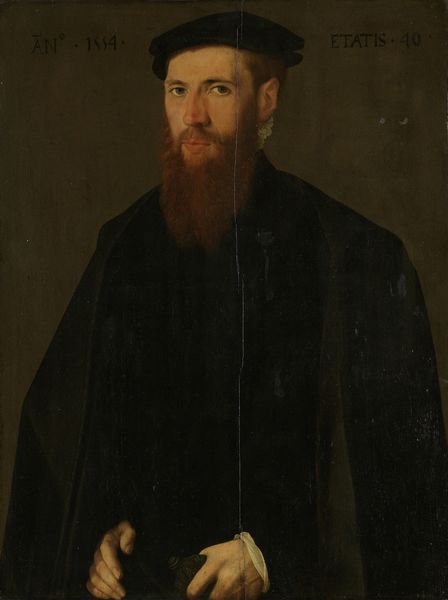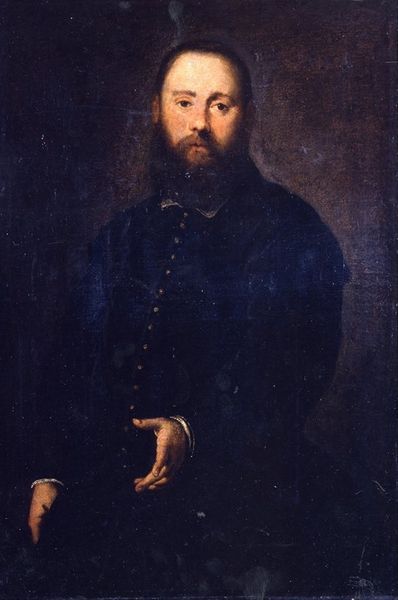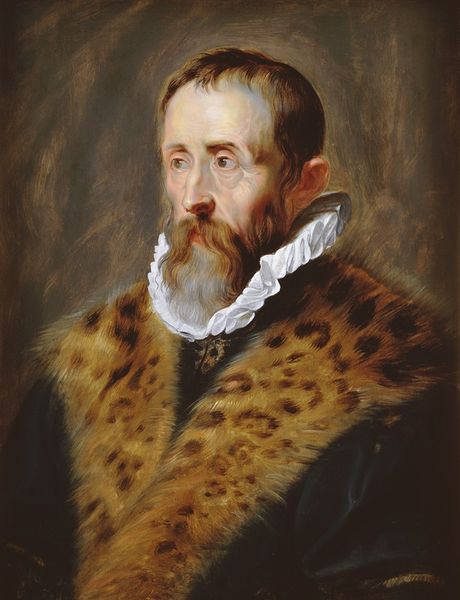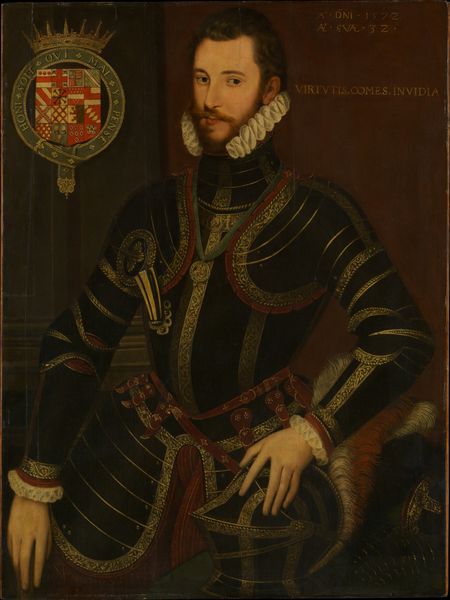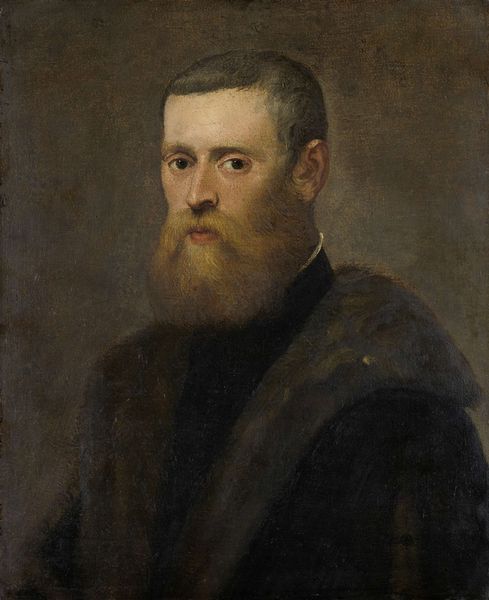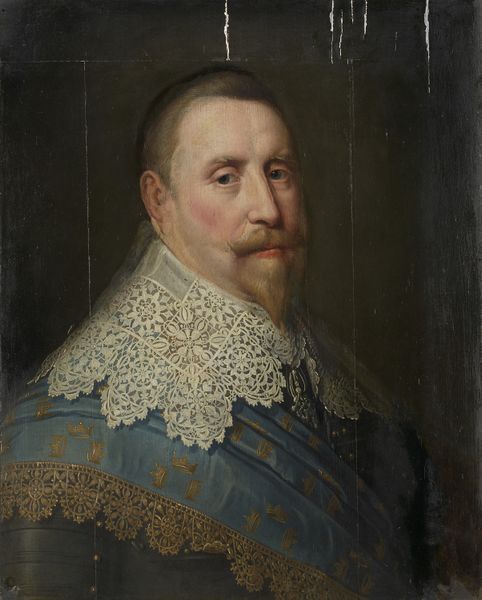
Copyright: Public Domain: Artvee
Editor: Here we have Eugen von Blaas’ “Bildnis Arthur Graf Berchtold,” from 1882, rendered in oil paint. There's something striking about the contrast between the subject’s intense gaze and the rather opulent details of his attire. What catches your eye in this portrait? Curator: My attention is immediately drawn to the strategic arrangement of light and shadow. Notice how Blaas uses light to sculpt the Count's face, drawing attention to his features, while simultaneously employing shadow to suggest depth and dimensionality. This chiaroscuro effect isn’t just decorative; it actively shapes our perception of the subject. Consider also the artist’s delicate brushwork in rendering the textures – the fur trim, the embroidery. Do you observe how each textural element contributes to a sense of material richness and weight? Editor: Yes, absolutely. The details, like the floral patterns on his coat, create a very distinct surface. It’s almost tactile. The patterns provide texture, and complexity to what otherwise could be a dark expanse of color. How does this visual interplay between texture and light enhance our understanding of the portrait beyond just a likeness? Curator: It pushes us beyond a superficial understanding of representation and asks us to contemplate the painting as a constructed surface. Consider the implications of that construction. Blaas meticulously builds an image, emphasizing specific materials and their qualities. He invites the viewer to appreciate the artwork not just as a window onto reality, but as an object with its own intrinsic formal qualities. The contrast you mentioned also enhances our perception of the subject as powerful and imposing, highlighting the symbolic nature of the man and how the clothing informs that reading. Editor: So, beyond the Count himself, we are also observing the artistic techniques used to convey that persona. It gives so much more weight to the subject of the portrait, literally and figuratively. I hadn't considered the textures as being that crucial before! Thanks for helping me understand this painting’s intrinsic values. Curator: Indeed. Formal elements are never simply neutral carriers of content, but rather active agents in the construction of meaning itself.
Comments
No comments
Be the first to comment and join the conversation on the ultimate creative platform.
